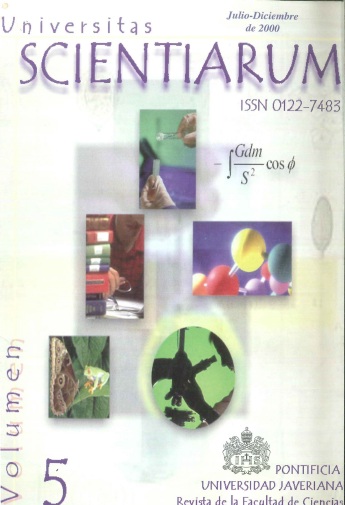Abstract
Using an ELISA test, camation mottle virus (CarMV) was found to infect 82% of the camation samples collected from the Sabana of Bogotá. The isolated virus was mechanically inoculated on virus-free carnation plants and purified by sucrose gradient centrifugation. CarMV coat protein was analized by SDS-PAGE showing a single component of about 38 Kda. Double-stranded RNA (dsRNA) extracted from carnation infected tissue showed 3 to 5 electrophoretic components ranging between 8.0 and 0.9 Kbp. Virus particles contained a genomic RNA of about 4.0 Kbp as revealed by agarosa gel electrophoresis. It was posible to distinguished 2 groups of electrophoretic pattems using RNAse T1 digestion of the RNA contained in the CarMV purified particles.Univ. Sci. is registered under a Creative Commons Attribution 4.0 International Public License. Thus, this work may be reproduced, distributed, and publicly shared in digital format, as long as the names of the authors and Pontificia Universidad Javeriana are acknowledged. Others are allowed to quote, adapt, transform, auto-archive, republish, and create based on this material, for any purpose (even commercial ones), provided the authorship is duly acknowledged, a link to the original work is provided, and it is specified if changes have been made. Pontificia Universidad Javeriana does not hold the rights of published works and the authors are solely responsible for the contents of their works; they keep the moral, intellectual, privacy, and publicity rights. Approving the intervention of the work (review, copy-editing, translation, layout) and the following outreach, are granted through an use license and not through an assignment of rights. This means the journal and Pontificia Universidad Javeriana cannot be held responsible for any ethical malpractice by the authors. As a consequence of the protection granted by the use license, the journal is not required to publish recantations or modify information already published, unless the errata stems from the editorial management process. Publishing contents in this journal does not generate royalties for contributors.



